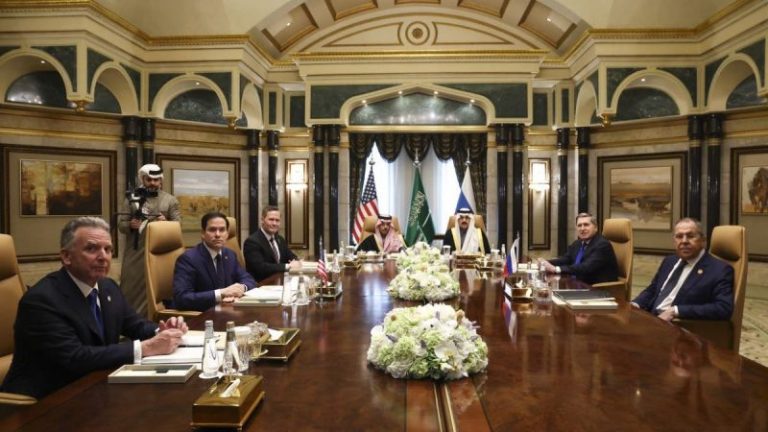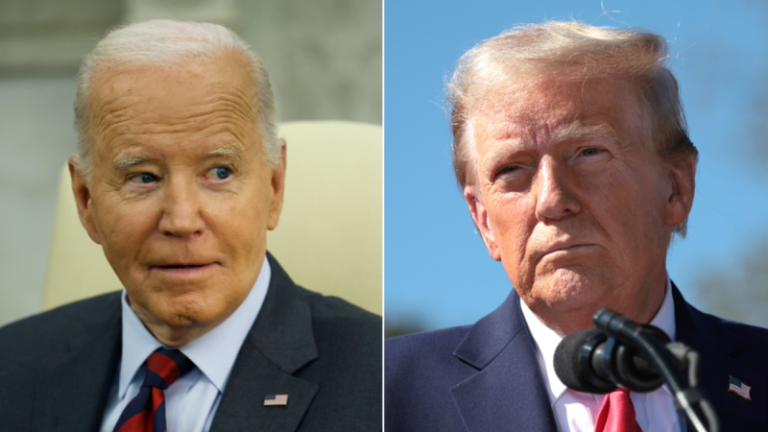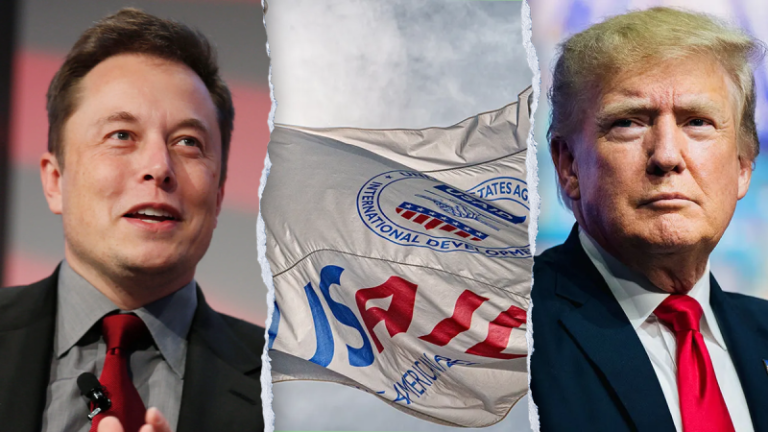The U.S. and Russia on Tuesday took steps to improve diplomatic ties after Secretary of State Marco Rubio met with top officials from Moscow in a move to find an end to the war in Ukraine.
Speaking to reporters following the 4.5-hour meeting held in Saudi Arabia between Rubio and his Russian counterpart, Sergey Lavrov, the secretary of state said the first move would be in reestablishing the ‘functionality of our respective missions in Washington and in Moscow.’
‘For us to be able to continue to move down this road, we need to have diplomatic facilities that are operating and functioning normally,’ Rubio said.
Rubio said there were three additional steps the U.S. planned to pursue, which included establishing a ‘high-level team’ to help negotiate the end of the war in Ukraine – though he did not mention if this would be headed by the special envoy to Ukraine and Russia, retired Lt. General Keith Kellogg.
The Trump administration will also be looking to expand geopolitical and economic relations with Russian President Vladimir Putin and the Kremlin.
Rubio did not go into detail on how or when the U.S. would agree to lift the heavy sanctions put on Russia following its illegal invasion, but said that at some point ‘the European Union (EU) is going to have to be at the table’ because they too have strict sanctions in place.
Concerns over EU involvement in negotiating a peace deal between Ukraine and Russia have been mounting as the Trump administration increasingly takes on Moscow.
Reporters questioned Kellogg about EU involvement following the Munich Security Conference that concluded Monday, but he would not confirm whether an EU representative will be officially included at any negotiations, despite direct concerns over European security.
Rubio responded to questions regarding concerns that the EU and Ukraine are being abandoned by the Trump administration and said, ‘No one is being sidelined here.’
‘But President Trump is in a position – that he campaigned on – to initiate a process that could bring about an end to this conflict, and from that could emerge some very positive things for the United States, for Europe, for Ukraine, for the world,’ the secretary said.
Rubio confirmed the final agreement to come out of the lengthy meeting on Tuesday was that the five men involved in the meeting – which included Rubio and Lavrov, as well as Trump’s national security advisor, Michael Waltz, special Mideast envoy Steven Witkoff and Putin’s foreign affairs advisor, Yuri Ushakov – would remain ‘engaged’ to ensure negotiations continue to progress in a ‘productive way.’
Neither the office of Ukrainian President Volodymyr Zelenskyy nor the EU immediately responded to Fox News Digital’s questions regarding their reactions to the day’s meeting.
Zelenskyy, who was supposed to arrive in Saudi Arabia on Wednesday, canceled his trip on Tuesday, which according to a Reuters report, was a move to counter any ‘legitimacy’ of the U.S.-Russia talks that were held without a Ukrainian delegation.
Kellogg’s team confirmed for Fox News Digital that he is set to meet with Zelenskyy this week during his trip to Kyiv.
Zelenskyy, like some EU leaders, has said he will not accept any ceasefire negotiations that are not made through coordinated efforts with Kyiv.
‘Ukraine and Europe – in the broad sense, including the European Union, Turkey and the United Kingdom – must be involved in discussions and the development of necessary security guarantees together with the United States, as these decisions shape the future of our part of the world,’ he said in an address following a meeting with Turkish President Reccep Erdoğan on Tuesday.
Reports on Tuesday also indicated that European leaders were looking to reconvene at a ‘second emergency Ukraine summit’ to discuss Ukraine and Europe’s security.
The State Department did not immediately respond to Fox News Digital’s questions.





